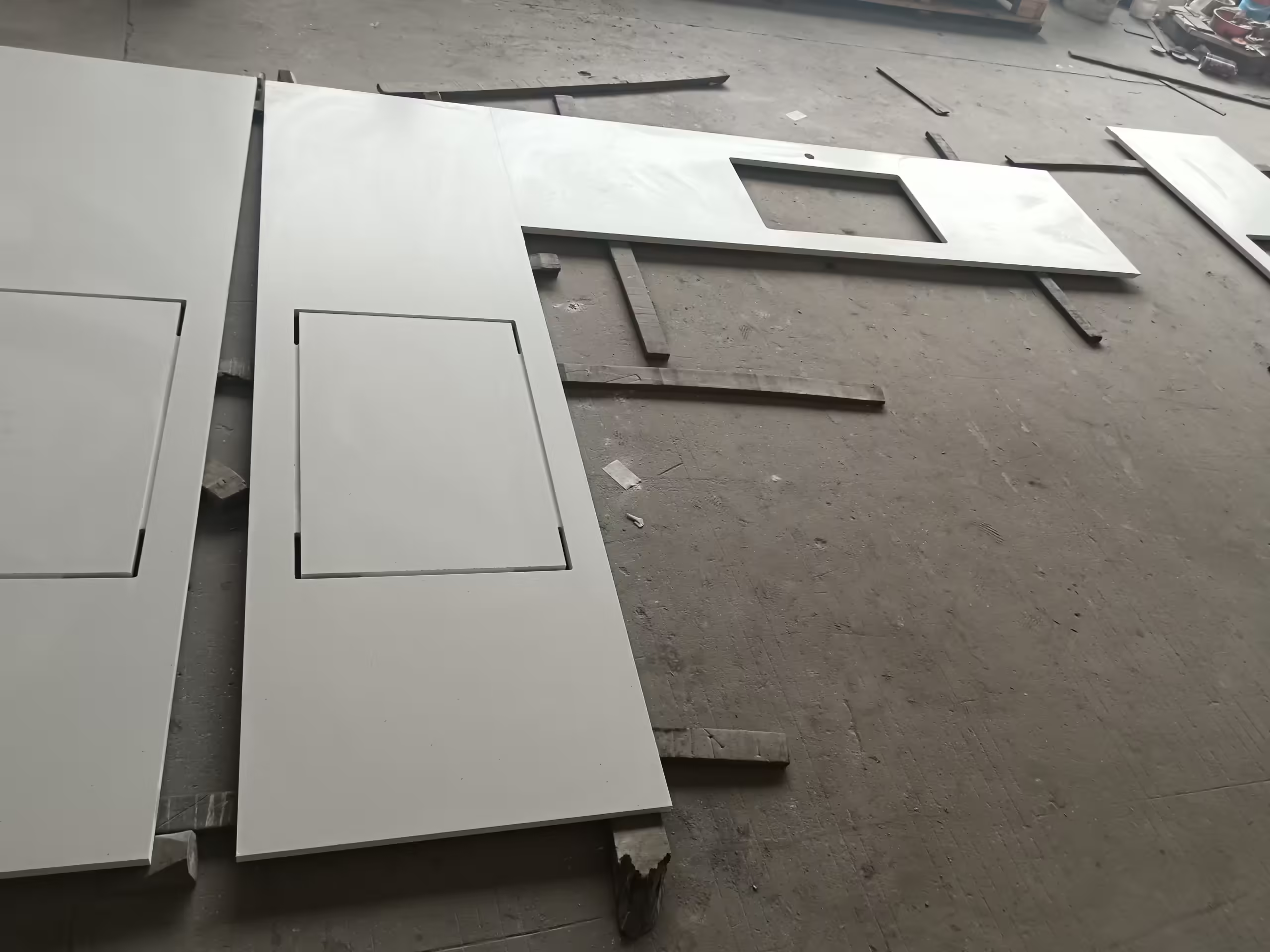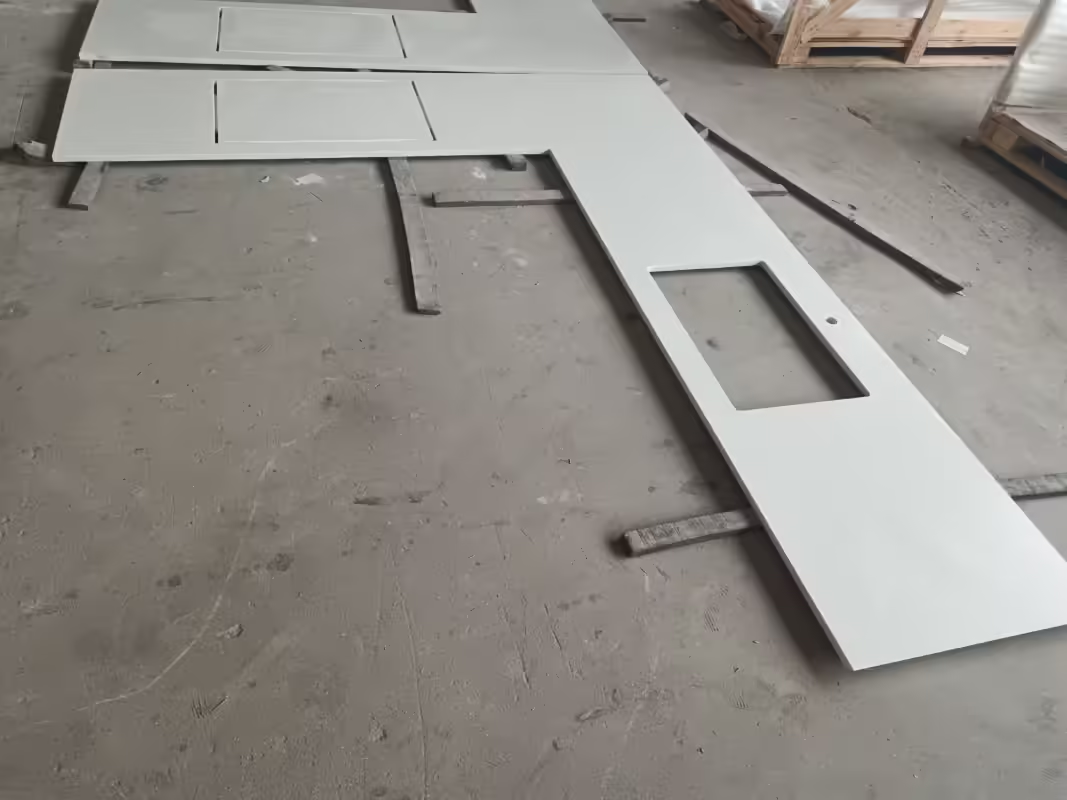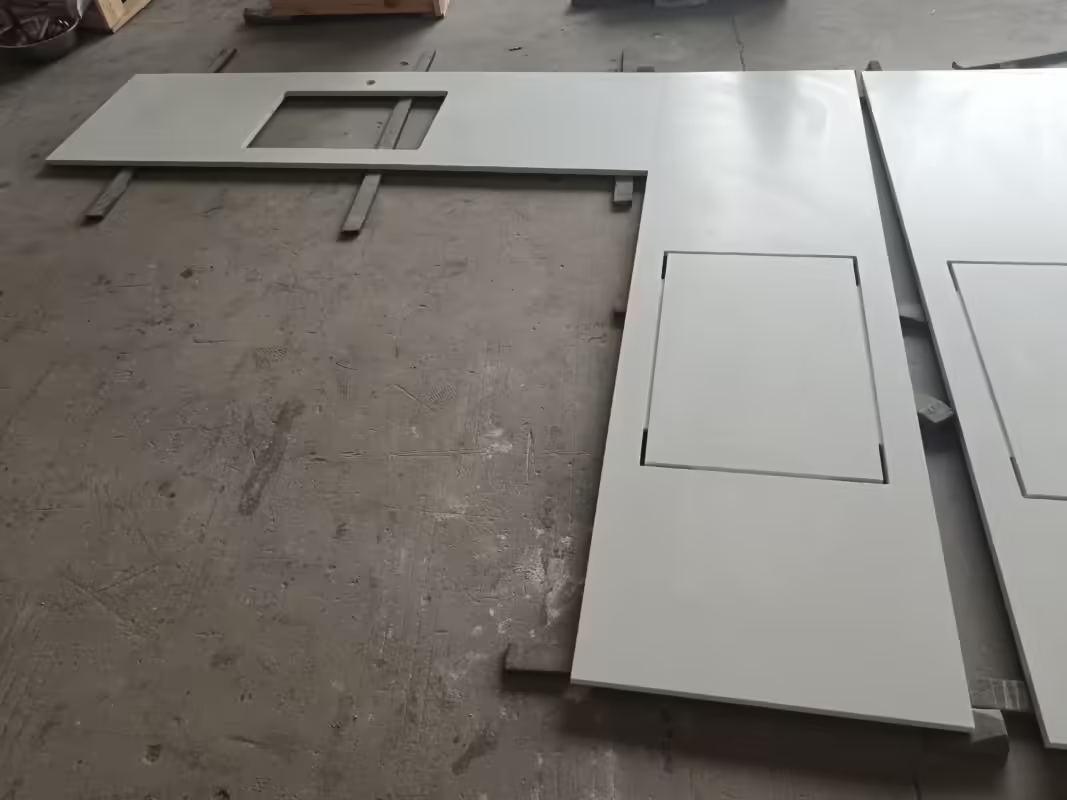Blog
The Differences Between Engineered Quartz and Artificial Quartz Stone

In the world of interior design, the terms “engineered quartz” and “artificial quartz stone” often surface. While they may seem interchangeable, there are distinct differences between the two. This blog post clarifies these differences and helps you decide which might be best for your project.
Composition and Manufacturing
Engineered Quartz: Engineered quartz is made from a blend of natural quartz, pigments, and polymer resins. This composition is about 90-95% natural quartz. The manufacturing process involves mixing these materials and then forming them into slabs by using a vibrocompression vacuum process.
Artificial Quartz Stone: Artificial quartz stone typically refers to products that mimic quartz but may include a different proportion of natural quartz to resins and pigments, sometimes lower than 90%. It may also include other types of stone and materials to achieve certain qualities or cost efficiencies.

Appearance and Design Flexibility
Engineered Quartz: Due to its high content of natural quartz, engineered quartz offers a depth, clarity, and a natural stone-like feel that is slightly more authentic than artificial quartz stone. The pigments allow for a wide range of colors and patterns.
Artificial Quartz Stone: While still offering a variety of designs, the appearance of artificial quartz stone can sometimes lack the natural stone’s translucency and depth. However, it often comes in patterns and colors that are not typically found in natural stone, providing unique design options.
Cost and Application
Engineered Quartz: Generally, engineered quartz is more expensive due to its high quartz content and the energy-intensive manufacturing process. It’s widely used for high-end residential and commercial applications where durability and aesthetics are paramount.

Artificial Quartz Stone: This option can be more cost-effective, making it suitable for a wide range of applications, including large-scale commercial projects where cost may be more critical than subtle style nuances.
Conclusion
Understanding the differences between engineered quartz and artificial quartz stone is crucial when selecting materials for your design projects. Each has its strengths and is suited to different applications, budgets, and aesthetic preferences. By distinguishing between these two materials, you can better align your choices with your project’s requirements and expectations.